
Many believe that there is something about the number ‘4’ that needs watching as we begin 2014. Mark Bittman, a New York Times columnist, reminded his readers that “war, famine, pestilence and death — the Four Horsemen of the Apocalypse — have been well represented in the years ending in ‘4’.” That this has indeed been the case needed a chronicle of the American experience with the number ‘4’. Bittman proceeded to provide that by going over the years in the American history starting with 1944. That was the year when the world war seemed headed for a close but not before million more lives were lost in bringing to an end the bloodiest contest in human history. Let us see if the Bittman hypothesis applies to the case of Pakistan.
I will begin with the year 1954 when the country was into the seventh year of hard-won independence. There was political turmoil in Karachi, still the capital of Pakistan. The government had been captured by a group of bureaucrats whose main interest was to keep political power in their hands rather than work on the development of a durable and representative political order. Liaquat Ali Khan had been dead for three years and power had passed into the hands of Governor General Ghulam Muhammad, who had dissolved the Constituent Assembly in order to consolidate power in his own hands. Guided by General Ayub Khan, the country had signed the Mutual Defense Agreement with the United States that was to tie the country with Washington for years to come. The year, therefore, set in place two trends in the country’s history: resort to unconstitutional means to hold on to power and to become dependent on the United States for its economic wellbeing.
The year 1964 saw the beginning of the end of the economic and political models followed by the regime of General/President Ayub Khan. This was the fourth year of what was then seen as the highly successful Second Five Year Plan. The military leader began to plan for his reelection as president under the Constitution of 1962. He didn’t expect that the scattered opposition to his rule would be able to coalesce under the banner of the Combined Opposition Party (COP). The COP was able to convince Fatima Jinnah to be its candidate. She fought a vigorous campaign and was greeted by large crowds of supporters. If the military government was able to deliver economic growth, it was clear that the people wanted political freedom even more. Ayub Khan won but with a margin that was much less than he had anticipated.
By 1974, Zulfikar Ali Bhutto had been in power for two years. He had scored a number of successes — a Constitution, reconciliation with Bangladesh, putting in place a new framework for dealing with India in the context of the ‘Simla agreement’. But in 1974, he completed a series of economic moves that involved the expansion of the presence of the state in economic management. The prime minister had little knowledge of economics and little understanding of the kind of role the government should play in looking after the national economy. His nationalisation programme had extended the hold of the bureaucracy on the economy. At the same time, he moved against the powerful Civil Service of Pakistan (CSP). The CSP, which had been the steel frame of the country’s government structure, was demoralised. Its ethos changed from serving the people to serving its members.
In 1984, President Ziaul Haq, having governed for seven years by postponing the promised elections a number of times had finally begun to think about ‘civilianising’ the military regime. But the political system had to pay a price for that: it came in the form of a heavily amended constitution that gave the president a number of extraordinary powers. By introducing Article 58 (2) (b) in the Constitution, he effectively turned the system of governance into a presidential system.
The year 1994 saw Pakistan in the middle of yet another political crisis. Benazir Bhutto was back in power as prime minister for the second time. While she had freed herself from the shackles of what had come to be called the ‘troika’ system, in which the prime minister shared power with the president and the chief of the army staff, she did not use the power that she now possessed wisely. She allowed her husband, Asif Ali Zardari, a great of deal of authority over government contracts. Some of this influence was used by him to obtain, it was alleged, large amounts of kickbacks, including those from a Swiss company that was engaged by the government to evaluate the declared value of imports. The ‘Swiss case’ still haunts Zardari.
In 2004, the Musharraf regime that had done well for five years began its slow descent into political confusion that ended with chaos. It was also in that year that the economy began to see a decline in the rate of growth that has lasted now for almost 10 years.
What does the story of ‘4’ tell us about Pakistan’s history? The years ending with that number saw the beginning of the decline of the regimes that had been in place for several years. It would appear that the year 2014 would break that trend. The government headed by Mian Nawaz Sharif has completed a bit more than six months in office. It can expect to stay in office for, at least, another 50 months. It could, with intelligent management, consolidate the political system in place and revive the economy.
Published in The Express Tribune, January 6th, 2014.
Like Opinion & Editorial on Facebook, follow @ETOpEd on Twitter to receive all updates on all our daily pieces.
COMMENTS (6)
Comments are moderated and generally will be posted if they are on-topic and not abusive.
For more information, please see our Comments FAQ














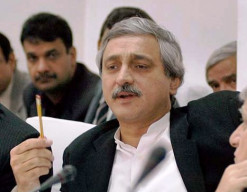

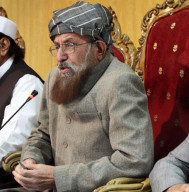
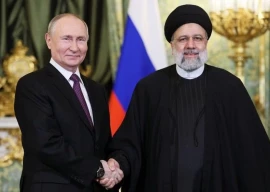
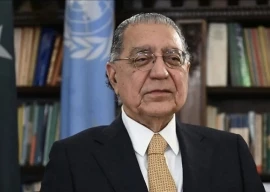



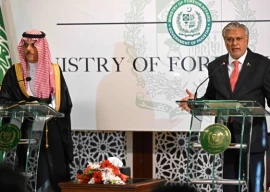





















Not making sense because if we see all 4s there are different stories and situations and all do not show the beginning of the decline. How it is a decline when similar governments continued from 54 till 73, how it is a decline when In 64 President Ayub won the election, in 74 Bhutto was to complete his constitutional tenure, From 84 and 2004 Zia and Musharraf ruled for good 4 more years without any sign of decline rather in the same or after one year they installed governments of their choice. And in 94 the making and breaking of governments had been going on from 88 to 99.
Please read the last sentence again. However, this time, please read it carefully. Regarding your objection: Mr. Burki has written that the government could, not that it would. Regarding your most twisted thought process: regardless, of whether the last sentence begins or ends with Insha Allah, if there is no effort there would be no reward. God (meaning Allah, knowing that you would object again, only wrote God so that anyone in the whole wide world can relate to what I am saying) helps those who help themselves! @wonderer:
Pick any year in Pakistan's short yet eventful history and you are guaranteed to find one or more crises.
If you add all the numbers in the year and if it is multiple of 7 you will see that historically those years turned out to be good for Pakistan
Is this a class in Numerology ? In the Indian system 4 and 8 are terrible numbers, in the Chinese system only 4 is bad, however 8 is excellent. As per the Western system year 2014 will represent number 7, not 4 or 8. Hope you continue your numerological analysis at the start of every year, if your readers support it.
Should not the last sentence end with "Insha Allah", Mr. Burki?